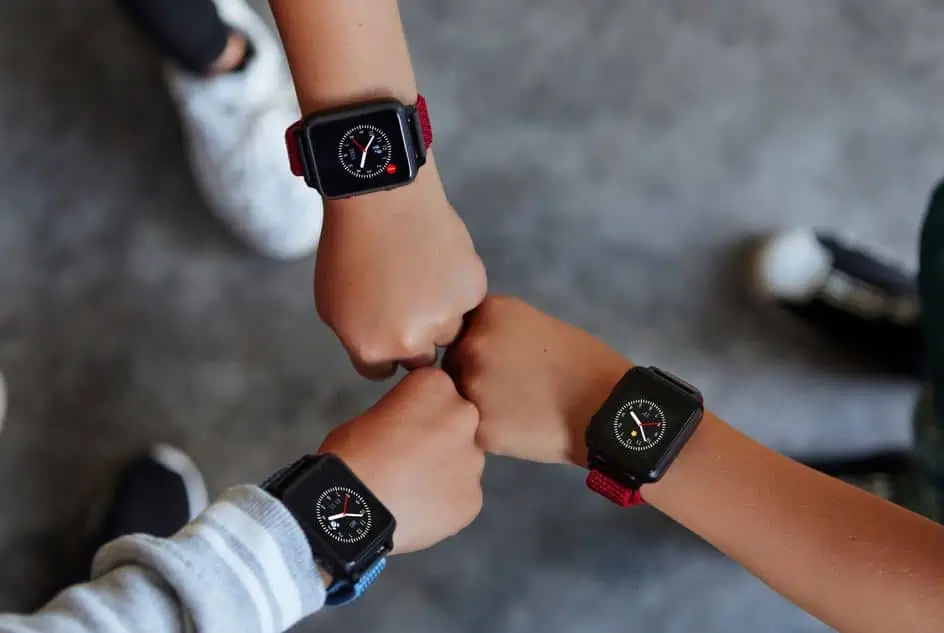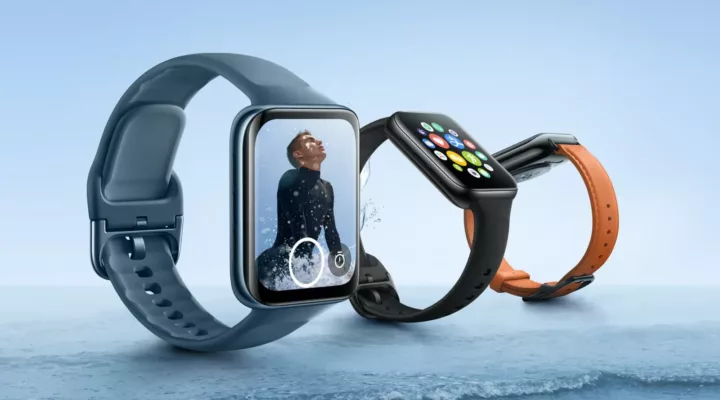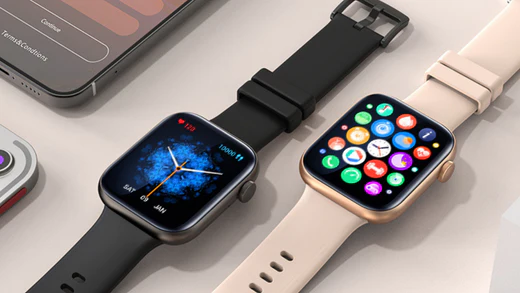Smartwatches have evolved from niche gadgets to mainstream accessories, combining style, functionality, and convenience. Whether you want to track workouts, receive calls on your wrist, or simply avoid missing important notifications, modern smartwatches can enhance your daily routine in myriad ways. However, with so many models and features to choose from, deciding on the right smartwatch can be overwhelming. This article explores the key factors to consider before making a purchase, ensuring you find a wearable that fits your lifestyle, budget, and personal tastes.
1. Clarify Your Usage and Goals
Before diving into technical specifications, it’s essential to define why you want a smartwatch. Here are a few common use cases and how they might influence your choice:
- Fitness and Health Tracking: Some people prioritize advanced health metrics, like heart rate monitoring, blood oxygen levels (SpO₂), electrocardiogram (ECG), stress tracking, or menstrual cycle tracking. If that’s you, focus on models that offer robust health and fitness features, strong sensor accuracy, and companion fitness apps.
- General Lifestyle and Notifications: Perhaps you want a smartwatch primarily to check texts, calls, or social media updates, control music, or access digital wallets quickly. In this case, a stylish design with reliable connectivity and a user-friendly interface might be top of mind.
- Outdoor Adventuring: If hiking, camping, or off-grid adventures are your passion, then a rugged watch with durable build materials, waterproofing, GPS, altimeter, and extensive battery life is important.
- Fashion Statement: Some might be drawn to smartwatches as a style accessory. For them, aesthetic appeal, customizable watch faces, and band swaps could be crucial.
Clearly identifying your priorities helps filter out features or watch models that don’t meet your specific needs.

2. Operating System and Phone Compatibility
One of the most fundamental considerations when choosing a smartwatch is its operating system (OS) and how well it integrates with your smartphone. Broadly speaking, here are the major smartwatch platforms:
- Apple’s watchOS: The Apple Watch requires an iPhone for setup and daily use. If you are deeply invested in the Apple ecosystem (owning an iPhone, possibly other Apple devices), the Apple Watch is renowned for its seamless integration with Apple services. Features like iMessage, Apple Pay, and Apple Fitness+ become readily accessible on your wrist.
- Google’s Wear OS: Wear OS powers a range of smartwatches produced by brands such as Samsung (partially, with One UI Watch as an overlay), Fossil, and others. Wear OS integrates well with Android phones, offering Google Assistant, Google Pay, Google Maps, and access to the Play Store for additional apps. It also has limited functionality with iPhones, but you’ll get the best experience if you’re an Android user.
- Samsung’s One UI Watch: While Samsung transitioned away from Tizen OS to a Wear OS foundation, its smartwatches (Galaxy Watch series) offer a custom interface (One UI Watch) on top. This watch environment functions best within the Samsung ecosystem—especially if you own a Samsung phone—though it still pairs reasonably well with other Android smartphones.
- Fitbit OS: Fitbit’s watches (e.g., Sense, Versa) primarily focus on health tracking, with a more simplified approach to notifications and apps. While they do work with both Android and iPhone devices, you’ll get the best synergy if you’re already a Fitbit user or highly value fitness-focused features.
- Garmin OS: Garmin’s proprietary OS is widely favored by serious athletes and outdoor enthusiasts. Garmin smartwatches usually excel in GPS accuracy, battery life, and robust health analytics, although they may not be as feature-rich in non-fitness areas (like mobile payments or broad app ecosystems) as Wear OS or watchOS devices.
- Proprietary Lite Operating Systems: Some fashion brands and budget-friendly manufacturers use their own lightweight OS (e.g., Huawei’s LiteOS, Amazfit’s Zepp OS). These can be battery-efficient and user-friendly but sometimes lack a wide app ecosystem or advanced integration with your smartphone.
Compatibility: If you’re an iPhone user, it’s optimal to choose an Apple Watch or a watch with excellent iOS support. Android users typically lean toward Wear OS devices, Samsung’s Galaxy Watches, or other compatible ecosystems like Garmin or Fitbit. Always confirm the watch’s compatibility with your specific phone brand and OS version before purchasing.
3. Budget and Price Range
Smartwatches vary significantly in cost, from budget options under $50 to high-end models exceeding $1,000. Determining a comfortable price range upfront helps narrow your choices:
- Budget Models ($50–$150): Basic fitness tracking, limited notification support, simpler displays, and often proprietary OS with fewer apps. Good for beginners or those who only need essential features like step counting and push notifications.
- Mid-Range Smartwatches ($150–$300): More robust health sensors, better build quality, often with heart rate monitoring, GPS, or additional fitness features. They might have slightly smaller app ecosystems but generally offer a solid experience for everyday use.
- Premium Wearables ($300–$500): Apple Watch Series, Samsung Galaxy Watch high-end models, Garmin mid-to-high tier devices. You’ll get advanced health features (ECG, SpO₂), sharper displays, faster processors, better build materials (stainless steel, titanium), and more app compatibility.
- Luxury and Specialist Watches ($500+): Devices built with high-end materials or specialized for extreme fitness/sports tracking. Luxury brands like TAG Heuer also produce premium smartwatches with elegant designs but at a steep price.
Remember also to factor in possible additional costs for watch bands, protective cases, or extended warranties, which can add up quickly.
4. Design, Comfort, and Durability
A smartwatch is not only a tech gadget; it’s also an accessory you’ll wear potentially every day. Aesthetics and comfort matter just as much as the internal tech:
- Form Factor: Round vs. square watch faces offer different styles. Round displays (common with Samsung and Garmin) mimic traditional watches; square displays (like the Apple Watch) maximize screen space for reading text.
- Materials: Aluminum and stainless steel are common in mid- to high-end models, while plastic or resin might be used for budget-friendly or sports-centric watches. Premium devices sometimes incorporate titanium or ceramic for enhanced durability and a luxury feel.
- Strap/Band Options: Swappable bands allow you to change the watch’s look for different occasions. Look for models with standard lug widths (e.g., 20mm, 22mm), as these give you a wide range of third-party straps to choose from.
- Comfort and Weight: Heavier watches (metal cases) feel more premium but can become uncomfortable during exercise or sleep. Lighter models (plastic or lightweight alloys) might be more comfortable for 24/7 wear. If you have smaller wrists, a watch with a smaller case diameter (~40mm or less) could be more comfortable.
- Water Resistance: Many smartwatches offer water resistance suitable for showering and swimming. Look for an IP rating (e.g., IP68) or an ATM rating (5ATM, 10ATM, etc.). If you plan to swim or dive, ensure the watch’s water resistance meets those requirements.

5. Health and Fitness Tracking Capabilities
For many people, the biggest appeal of a smartwatch lies in its health and fitness features. Here are the most common sensors and metrics to look for:
- Heart Rate Monitor (HRM): Almost every modern smartwatch includes an optical HRM. Some advanced models incorporate an ECG sensor to detect irregular heart rhythms.
- Blood Oxygen (SpO₂) Sensor: Useful for monitoring overall wellness, detecting potential respiratory issues, and adjusting training intensity.
- GPS and Glonass: A built-in GPS allows you to track outdoor workouts, runs, hikes, and cycles without needing a phone. This is critical if you want accurate distance, pace, and route information.
- Accelerometer and Gyroscope: These sensors track movement, steps, and orientation. They are standard on most smartwatches but can vary in accuracy.
- Sleep Tracking: Many smartwatches monitor your sleep phases (light, deep, REM) and offer insights on sleep quality. The best devices also provide actionable advice to improve rest.
- Stress Monitoring: Advanced devices can use heart rate variability to estimate stress levels, providing guided breathing or mindfulness exercises.
- Advanced Tracking Modes: Watches tailored to runners, swimmers, triathletes, or hikers often include specialized programs (e.g., Garmin offers running dynamics metrics like cadence, ground contact time, vertical oscillation).
Companion Apps: Don’t forget to evaluate the ecosystem. Apps like Apple Health, Google Fit, Samsung Health, Garmin Connect, or Fitbit can significantly influence your overall experience with data organization, progress tracking, and social challenges.
6. Battery Life and Charging
Battery life is a significant area of difference among smartwatches. Some devices last barely a day on a single charge, while others can stretch up to a week or more:
- Daily vs. Multi-Day Usage: Apple Watches and certain Wear OS devices often need nightly recharging if you use them intensively—especially with continuous health tracking. On the other hand, many Garmin and Fitbit models can last several days on a single charge, which is beneficial if you’re traveling or dislike frequent charging.
- Charge Times: Some watches offer quick charging, giving multiple hours of battery life from a short 15- to 30-minute charge. Evaluate whether fast charging is available and how essential that is to your routine.
- Wireless vs. Proprietary Chargers: Check if the watch supports wireless charging or uses a unique magnetic charging cable or cradle. Proprietary cables can be inconvenient to replace, while Qi wireless compatibility is more convenient (though less common).
- Always-On Display: Watches with bright, always-on displays typically consume more battery. Some operating systems let you customize power settings—like disabling always-on or limiting notifications to extend battery life.
7. Display Quality and Interface
Smartwatch displays come in various forms, from standard LCD panels to vibrant OLED screens:
- Display Type:
- AMOLED or OLED: Offer deeper blacks and vivid colors. They can be more power-efficient, especially in dark-themed interfaces.
- LCD: Can be cheaper but often have less contrast compared to AMOLED screens.
- Memory-in-Pixel (MIP) Displays (common in Garmin watches): Highly visible under direct sunlight and power-efficient, making them ideal for outdoor sports.
- Brightness and Outdoor Legibility: If you spend a lot of time outdoors, ensure the watch face remains legible in bright sunlight. Many devices have ambient light sensors to adjust brightness automatically.
- Touchscreen and Buttons: Some models incorporate both a touchscreen and physical buttons or a rotating crown. If you exercise often and need to navigate menus with sweaty fingers or gloves, physical buttons or a rotating bezel might be more reliable than a purely touch-based interface.
- Customizable Watch Faces: The ability to personalize watch faces can be a fun aspect of smartwatch ownership. Different watch faces can also display different metrics at a glance—like steps, weather, or battery life—so check if the platform offers a variety of customization options.

8. Communication and Smart Features
Modern smartwatches go well beyond simple step counting. Here are some smart features to look for:
- Notifications and Calls: Nearly all smartwatches allow you to receive phone notifications—texts, social media updates, and emails—on your wrist. However, the level of interaction varies: some let you respond or dictate messages, while others merely display them.
- Cellular Connectivity: Some models come in LTE/4G variants, enabling you to make calls, send messages, or stream music without your phone nearby. This is convenient if you want to go for a run without your phone but remain reachable. Note that LTE models usually come at a higher cost and may require an additional monthly data plan.
- Voice Assistants: Apple Watch uses Siri; Samsung offers Bixby (though it can also run Google Assistant on newer Wear OS-based models); Wear OS devices typically come with Google Assistant. Fitbit has integrated Amazon Alexa on some models. If voice control is important to you, verify that the watch’s assistant is both reliable and suits your personal preference.
- Music Storage and Streaming: If you like working out without carrying a phone, having a watch that can store music offline (e.g., Spotify or Apple Music playlists) is crucial. Alternatively, streaming over LTE or Wi-Fi might be an option, but it drains battery faster.
- Contactless Payments: Many smartwatches support NFC payments (Apple Pay, Google Pay, Samsung Pay, Garmin Pay, Fitbit Pay), letting you tap to pay at stores that accept contactless transactions. This can be a real convenience during workouts or quick errands.
9. App Ecosystem and Third-Party Support
A robust app ecosystem can significantly expand the capabilities of your smartwatch. While some users only need the basics—like notifications, fitness tracking, and weather forecasts—others might want specialized apps for productivity, smart home control, or note-taking. Here’s a quick breakdown:
- Apple Watch: Thousands of apps specifically optimized for watchOS, including productivity, health, finance, travel, and more.
- Wear OS: Access the Google Play Store on your watch, but the selection (and app quality) can vary widely. Big names typically support Wear OS, but smaller developers may not.
- Samsung’s One UI Watch: Because it’s built on Wear OS, the app selection is fairly robust. Samsung also adds its own ecosystem apps (Samsung Health, SmartThings, etc.).
- Fitbit, Garmin, and Others: More limited third-party app options, though these platforms often excel in fitness or sport-specific apps and integrations.
If you plan to rely heavily on third-party watch apps (beyond the core features), ensure the platform you choose supports the app categories you need.
10. Brand Reputation and Customer Support
Finally, don’t overlook the importance of brand reputation and after-sales support. Consider factors such as:
- Warranty and Return Policy: Most major brands offer at least a one-year limited warranty. Check if extended warranties or accident protection plans are available.
- Customer Service: Some brands have more responsive customer service channels, whether online or in physical stores.
- Community and Ecosystem: Larger brands—like Apple, Samsung, Garmin, and Google—often have active online communities where you can troubleshoot issues or learn tips and tricks. Smaller or less-known brands may have limited customer support or slower firmware updates.
11. Practical Tips for Choosing the Perfect Smartwatch
a) Try It Out, If Possible
If you have access to a local electronics store, spend time with demo units. Gauge the comfort of the watch, the screen quality, and the interface responsiveness. A device might look perfect on paper but could feel bulky on your wrist.
b) Research Real-World Battery Life
Official battery estimates often reflect ideal scenarios. Look up user reviews, especially if you plan to use power-hungry features like continuous heart rate monitoring, GPS for running, or LTE streaming.
c) Consider Software Updates and Support Longevity
Some watches get frequent firmware updates adding new features or improving performance, while others might see minimal support after launch. Buying from a reputable brand with a track record of ongoing updates can extend the useful life of your purchase.
d) Look for Sales or Bundles
Smartwatches often go on sale during holidays or brand promotional events. Bundle deals (watch plus extra band, or watch plus earbuds) can also save money. If you’re not in a rush, waiting for a discount can result in substantial savings.

12. Conclusion
A smartwatch can be a transformative addition to your daily life—offering convenient notifications, advanced health monitoring, or even a stylish statement piece on your wrist. Yet the market’s diversity means you should take time to consider how well each potential device aligns with your smartphone ecosystem, budget, design preferences, and desired features.
- Are you primarily focused on health tracking and fitness metrics? Devices from Fitbit or Garmin may offer the best specialized features.
- Do you want a seamless connection to your iPhone’s ecosystem? The Apple Watch is the clear frontrunner.
- Prefer Android integration and Google services? A Wear OS device (or Samsung’s Galaxy Watch series) might suit you best.
- Looking for long battery life and rugged design for outdoor activities? Check out Garmin, certain high-end Huawei or Amazfit models, or specialized adventure-focused wearables.
Finally, don’t forget the intangible element of personal style, comfort, and the user experience that can only be fully appreciated by testing a device in person or watching in-depth reviews. By carefully evaluating these factors—operating system, compatibility, price, design, durability, health features, battery life, display quality, connectivity, app ecosystem, and brand reputation—you’ll be well-equipped to make an informed choice. The right smartwatch should not only complement your phone but also your overall lifestyle, helping you stay on top of your goals while looking and feeling great.
